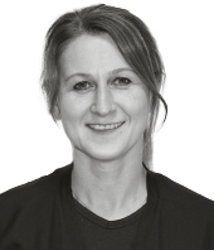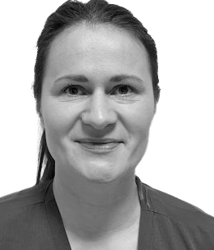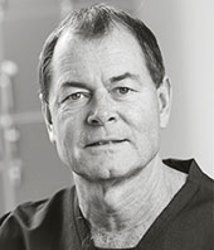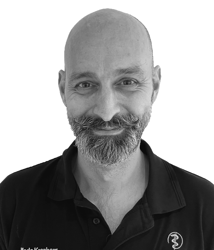Ablation of atrial fibrillation – precautions on arriving home
You can expect a bruise in the right groin at the injection site. The bluish/yellow/reddish colouring may attract down the leg due to gravity, and is completely harmless as long as you are still soft in the groin. It is normal to feel a slight tenderness in the groin, just as someone will feel a small "ball" similar to a pea.
If, on the other hand, you get bleeding or major swelling/blood accumulation in the groin, you must lie down and press on the injection site. Contact either us or another medical authority.
You can remove the patch in the groin the day after discharge if the wound is dry.
The first week you must protect your groin by e.g. avoiding heavy lifting and long walks. Physical activities can therefore only be resumed one week after the treatment. However, we recommend to wait for another week before starting running, mountain bike/racing bike activities or golf playing.
Many patients have some pain/pressure/murmuring in the chest or light headaches the first few days after treatment, which can be managed with paracetamol 1 gram up to a maximum of 4 times daily - i.e. every 6 hours. Some may even experience migraine like reactions during the first couples of days. This is totally benign and nothing to worry about.
Quite a lot of salt water is given into the bloodstream during the treatment. This can mean that during the initial couple of days after treatment, you may have some fluid retention with a tendency to slight shortness of breath and a tendency to slightly thicker ankles than usual.
After the treatment, you may experience that your resting heart rate is higher than usual. In a few months, the heart rate will normally return to the level from before ablation.
You must continue with your usual medication until the outpatient check-up 3 months after the treatment (unless otherwise agreed with the doctor at discharge).
Many patients experience heart palpitations after the treatment. Even atrial fibrillation may occur after the treatment, which is due to irritation from the scar tissue in the heart. It is thus not due to a lack of effect of the treatment. Some experience increased frequency of seizures in the first 2-3 months after treatment, after which the symptoms usually subside. Therefore, the final effect of the treatment can only be determined after 3 months.
If you get palpitations/atrial fibrillation, the following is suggested:
- If the symptoms are the same as before the treatment, you can wait to see if the attack stops spontaneously.
- If the symptoms are different from usual, it is recommended to visit your GP or cardiologis for recording of an ECG.
- If the attack is unbearable, you must contact a doctor/on-call doctor with a view to admission to your home hospital for "shock" (DC conversion).
- If you have a recurrence of atrial fibrillation, but are not greatly affected by it, you can wait a few days and see. If the atrial fibrillation does not stop on its own during approximately two days, you should contact your GP/cardiologist with a view to admission to your home hospital for "shock" (DC conversion).
- In the case of frequent relapses after treatment, more powerful heart medication may be necessary to stabilize the heart rhythm. Your GP can refer you to the home hospital for change in medication.
It is a good idea to record the frequency and duration of any symptoms and bring information about this to the outpatient check-up.
In the event of severe chest pain, severe shortness of breath or fainting, you should seek medical attention.
Do you want to know more...
It is possible to get more information on Chief Cardiologist Peter Steen Hansen's blog about heart rhythm disorders:
rytmedoktor.dk/en/
If you are otherwise in doubt or have questions, you are always welcome to contact the Heart Clinic Mølholm on phone +45 76427420 or mail: hjerte@molholm.dk
Specialists and practitioners












